Tech
M1 vs. M2 MacBook Air Buyer's Guide: Is It Worth Upgrading? – MacRumors
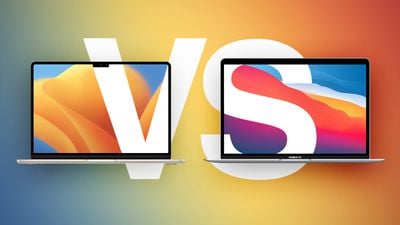

Apple’s MacBook Air with the M2 chip comes over a year and a half after its M1-based predecessor. The new device features a complete redesign as well as several important under-the-hood improvements that could make it a major upgrade worth considering for many users, even though it may not be worthwhile for some.
The MacBook Air is often chosen by those who require a portable, more affordable Apple laptop, with the device offering a lightweight design at a price well below the high-end MacBook Pro models. The M2 MacBook Air joins the Mac lineup at a $1,199 price point – with the previous M1 model remaining on sale for the same $999 price tag that it debuted with in November 2020.
Whether you are weighing up the upgrade from the M1 MacBook Air to the M2 MacBook Air, or are in the market for a new MacBook Air and are mulling whether it’s worth saving $200 by buying the M1 model, our buyer’s guide helps you to work out which of the two MacBook Air models currently on sale is best for you.
Comparing the M1 and M2 MacBook Air Models
Despite their different designs, there are still a large number of important parallels between the two MacBook Air models:
- ~13-inch Retina display with P3 wide color and True Tone
- Ambient light sensor
- Touch ID
- Force Touch trackpad
- Fanless design with passive cooling
- Apple silicon chip with 8-core CPU
- Video encode and decode engines for hardware-accelerated H.264 and HEVC video
- 256GB, 512GB, 1TB, and 2TB SSD storage configurations
- Two Thunderbolt/USB 4 ports
- 3.5mm headphone jack
- Support for wide stereo sound and Dolby Atmos playback
- Three-mic array with directional beamforming
- 802.11ax Wi-Fi 6 and Bluetooth 5.0
- Up to 18 hours of battery life
- Available in Silver and Space Gray
Beyond their designs, there are crucial differences between the M1 MacBook Air and the new, M2 MacBook Air:
Differences
M1 MacBook Air
- 13.3-inch Retina display (2560 by 1600 pixels)
- 400 nits brightness
- Apple M1 chip with up to 8-core GPU
- 68.25GB/s memory bandwidth
- 8GB and 16GB unified memory configurations
- 720p FaceTime HD camera
- Stereo speakers
- 3.5mm headphone jack
- 49.9-watt-hour lithium-polymer battery
- 30W USB-C Power Adapter
- Available in Gold
M2 MacBook Air
- 13.6-inch Liquid Retina display (2560 by 1664 pixels)
- 500 nits brightness
- Apple M2 chip with up to 10-core GPU
- ProRes encode and decode engine for hardware-accelerated ProRes and ProRes RAW video
- 100GB/s memory bandwidth
- 8GB, 16GB, and 24GB unified memory configurations
- 1080p FaceTime HD camera
- Four-speaker sound system
- 3.5mm headphone jack with advanced support for high-impedance headphones
- 52.6-watt-hour lithium-polymer battery
- 30W USB-C Power Adapter (with 8-core GPU model) or 35W Dual USB-C Port Compact Power Adapter (with 10-core GPU model)
- Supports fast charging with 67W USB-C Power Adapter
- Available in Starlight and Midnight
Design
The most noticeable difference between two MacBook Air models is their design. While the M1 MacBook Air mirrors the design of previous models with a tapered, “wedge” design, the M2 model takes design cues from the latest 14- and 16-inch MacBook Pro models with a uniform thickness and a flat top with rounded bottom edges.




It is ultimately a matter of personal preference which design you prefer, but the M1 MacBook Air features the exact same design that the device has been sporting since 2018, which itself carried over the tapered style Apple has used since 2010. The M2 MacBook Air uses Apple’s latest design language and looks like a much more modern device.




Another design difference worth highlighting is that the M2 MacBook Air features a full-height function key row, rather than the M1 model’s half-height row, and has a different Touch ID scanner design. The Magic Keyboards are otherwise the same. The full-height function row is unlikely to influence any purchasing decisions, but it is still worth highlighting amid bigger improvements.
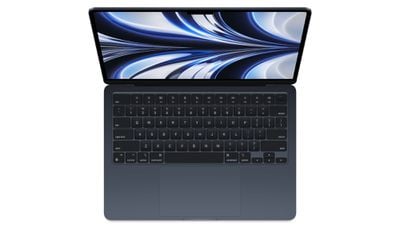



Dimensions and Weight
The M2 MacBook Air is 0.19 inches (4.8 mm) thinner than the thickest point of the previous model. Both designs have the exact same width, but the M2 model is slightly longer. Despite not having a tapered design, the new MacBook Air delivers a 25 percent volume reduction over the previous generation and should feel more slight in the hand.








True to its name, the M2 MacBook Air is also 0.1 pounds (45 grams) lighter than the previous model.
M1 MacBook Air
- Height (at thickest point): 0.63 inches (1.61 cm)
- Height (at thinnest point): 0.16 inches (0.41 cm)
- Width: 11.97 inches (30.41 cm)
- Depth: 8.36 inches (21.24 cm)
- Weight: 2.8 pounds (1.29 kg)
M2 MacBook Air
- Height: 0.44 inch (1.13 cm)
- Width: 11.97 inches (30.41 cm)
- Depth: 8.46 inches (21.5 cm)
- Weight: 2.7 pounds (1.24 kg)
While the M2 MacBook Air does not deliver a massive change in terms of portability, its reduction in weight and volume are likely to be welcomed by users who often need to carry their device around. The M1 MacBook Air is by no means a large or overly heavy device, but the M2 MacBook Air is more likely to fit easily into tight bag compartments and be very slightly less cumbersome. The new design may be more striking and visually appealing, but it is generally not worth buying the latest model purely for better portability.
Color Options
Like many Apple devices, both models are available in Silver and Space Gray. The M2 MacBook Air is not available in Gold, but it offers Starlight and Midnight options.
If you have other Apple devices in Starlight and Midnight, such as an iPhone 13, iPad mini or iPad Air, or aluminum Apple Watch Series 7, you may prefer to get the M2 model to obtain a matching color. The unique champagne tone of Starlight or the navy-tinted hue of Midnight may also simply be more appealing, but Silver and Space Gray users have no reason to prefer the M2 model simply on the basis of color.
Display
Both models feature a high-resolution Retina display with P3 wide color and True Tone, but Apple boasts that the M2 MacBook Air features its latest “Liquid Retina display.” This allows it to have slimmer borders, fitting a larger display in a similarly sized device, and the edges of the display curve around the top corners of the lid for a more modern appearance.
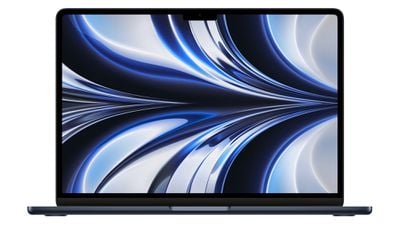



The M2 MacBook Air’s display provides an additional 0.3 inches of diagonal space, making slightly more space for on-screen content, and the display can get 25 percent brighter than the M1 model, making it better for use outdoors, in direct sunlight, or in bright environments.
The M2 MacBook Air features a “notch” to house the FaceTime HD camera that cuts into the top of the display. While the displays feature different resolutions, they have the same 16:10 aspect ratio below the notch, so it should not be an important consideration for most buyers, especially since macOS’s menu bar takes advantage of this additional vertical space on the M2 model.




The M1 MacBook Air still has a more than serviceable LCD Retina display that will meet most customers’ needs. There are few material differences between the displays in terms of specifications that make it worth buying one device over the other or upgrading, but the larger borders around the M1 model’s smaller display certainly make it look more dated, which may sway some customers toward the newer model.
M1 vs. M2
One of the most important differences between the current and previous-generation MacBook Airs is their Apple silicon chip. The M1 chip, introduced in November 2020, is based on Apple’s A14 Bionic chip. On the other hand, the M2 is based on the A15 Bionic chip from the iPhone 13.




While both chips feature an eight-core CPU with four performance cores and four efficiency cores, the M2’s cores offer moderate performance and efficiency improvements and up to two additional GPU cores. Apple says that with the M2 chip “intensive workloads like editing complex timelines in Final Cut Pro are nearly 40 percent faster than the previous generation… Applying filters and effects in apps like Adobe Photoshop is up to 20 percent faster than before.”
Like the M1 Pro, the M2 features a media engine for hardware-accelerated ProRes and ProRes RAW video encode and decode. On the other hand, the M1 chip’s dedicated media engine can only accelerate H.264 and HEVC video. Apple says that this dramatically speeds up video workflows on the latest MacBook Air, allowing users to play back up more 4K and 8K streams of video and convert video projects to ProRes considerably faster than before.
For casual users, the M2 chip is unlikely to make much difference over the M1 chip in day-to-day tasks, with improvements being more noticeable in professional workflows. For more information about the specific differences between the M1 and M2 chips, see our detailed guide:
Unified Memory
Both the M1 and M2 are configurable with 8GB or 16GB of unified memory, but the M2 offers an additional 24GB top-tier memory option. Multitasking and memory-hungry workflows, such as working with large assets, benefit from the higher memory option as a result.
In addition, the M2 has a 100GB/s memory bandwidth, compared to 68.25GB/s with the M1, meaning that the latest MacBook Air can access more memory faster.
Camera
The M2 MacBook Air includes a new 1080p FaceTime HD camera with twice the resolution and low-light performance of the previous generation, according to Apple. This is sure to substantially improve the video calling experience compared to the 720p camera of the M1 model.
Speakers
The M2 MacBook Air offers a four-speaker sound system integrated between the keyboard and the display, which Apple says “produce improved stereo separation and vocal clarity.” The M1 MacBook Air retains a stereo speaker setup, which is likely to be good enough for most users. Both devices support wide stereo sound and Dolby Atmos playback.
Ports and Charging
The M2 MacBook Air ups the device’s audio credentials further with support for high-impedance headphones like the high-end 14- and 16-inch MacBook Pros, which could be an important upgrade for some audio professionals.
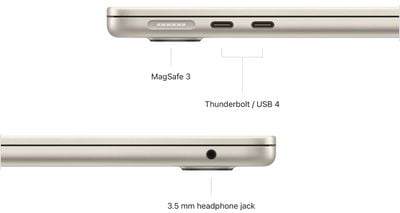



More noticeable is the presence of a MagSafe port on the M2 MacBook Air, allowing users to connect and release the charging cable from their MacBook Air more easily – especially if the charging cable is accidentally pulled, and see an LED indicator for the device’s charging status.
Both models feature two Thunderbolt ports, so there is no outright difference when it comes to connecting accessories, but it is worth noting that the MagSafe port on the M2 model effectively frees up a Thunderbolt port for accessories that would otherwise need to be used for charging.
Though the M2 MacBook Air comes with a larger, 52.6-watt-hour lithium-polymer battery, both devices have the same 18-hour battery life. When using a 67W USB-C Power Adapter, the M2 MacBook Air supports fast charging.
M2 MacBook Air models configured with the 10-core GPU option come with a 35W Dual USB-C Port Compact Power Adapter, rather than the one-port 30W USB-C Power Adapter that comes with the M1 model and base M2 MacBook Air model.
Final Thoughts
In some senses, the M2 MacBook Air is similar to its predecessor, with the same Magic Keyboard and Force Touch trackpad, two Thunderbolt/USB 4 ports, a passive cooling system, and 18-hour battery life. The devices have a similar footprint, Retina display around 13 inches in size, up to 2TB of storage, can hardware-accelerate H.264 and HEVC video, and come with a 30W charger as standard.
That being said, there is no doubt that the M2 MacBook Air delivers a major redesign. Its uniform thickness, reduced volume and weight, larger display with slimmer borders, and full-height function row are sure to make for a more modern appearance. Yet there are also practical improvements such as the MagSafe port, fast charging, brighter display, 1080p FaceTime HD camera, and four-speaker sound system that meaningfully improve the user experience in many areas.
For these reasons, if choosing between buying the M1 MacBook Air or the M2 MacBook Air, it is worth spending the additional $200 for the M2 model’s new design, better performance, and across-the-board improvements. That being said, if price is an issue, the M1 MacBook Air is still a very capable machine with plenty of similarities to the latest model.
Given that it has only been 18 months since Apple launched the M1 MacBook Air and the M1 chip continues to be offered in the iPad Air, iPad Pro, Mac mini, and iMac, the M2 MacBook Air will not be worth it for all users coming directly from the previous model. Some MacBook Air customers may wish to wait longer in between upgrades for even bigger changes.
When considering an upgrade from the M1 MacBook Air to the M2 model, users should weigh up how much they would utilize specific improvements. The M2 chip is unlikely to eclipse the M1 for everyday users, but for some workflows, it could offer real enhancements. For example, the M2’s ProRes encode and decode engine, 100GB/s memory bandwidth, and 24GB memory option may make it a much more powerful device for professionals.
M1 MacBook Air users who need more than 16GB of memory, make lots of video calls, or even those who are prone to accidentally tugging on their charging cable should consider upgrading. The combined advancements of the new design, M2 chip, four-speaker system, larger display, and faster charging make switching the M1 MacBook Air for the M2 model a more worthwhile action than many other generation-over-generation upgrades.
The M2 MacBook Air may be best suited to those who are first-time MacBook Air buyers or are upgrading from an older machine, rather than 2020’s M1 model. Nevertheless, the M2 MacBook Air is a significantly more appealing overall package with significant improvements in almost all areas, making it a justifiable upgrade for almost everyone.
Tech
Moto Edge 50 Ultra unveiled with SD 8s Gen 3, 64MP 3x periscope and real wood back – GSMArena.com news – GSMArena.com


Do you miss the days when Motorolas could be styled with real wood backs? The new Motorola Edge 50 Ultra has a real wood option along with two vegan leather colorways – Forest Grey and Peach Fuzz (Pantone’s Color of the Year 2024).


Motorola Edge 50 Ultra Nordic Wood
There was no Ultra model last year, so this isn’t a sequel but rather an upgrade over the Edge 50 Pro that was unveiled a couple of weeks ago. The Ultra brings more processing power and a better camera setup compared to the Pro.








Motorola Edge 50 Ultra Forest Gray and Peach Fuzz
It is based on the Snapdragon 8s Gen 3, a huge step up from the 7 Gen 3 chip inside the Pro. You get more RAM too, 12GB or 16GB (LPDDR5X) with more available via RAM boost. The storage is 512GB or 1TB (UFS 4.0).
The camera upgrades start with the main module, which is equipped with a 50MP 1/1.3” sensor – large enough to have 1.2µm pixels before quad pixel binning comes into play. It has omni-directional autofocus and OIS for the f/1.6 lens.
The standout camera is the 3x 72mm periscope, which is equipped with a 64MP sensors (0.7µm pixels) and a bright f/2.4 aperture. Next up is the 50MP ultra wide camera (0.64µm pixels), its f/2.0 lens has 122° field of view and autofocus for macro shots. The cameras use a laser autofocus system and a 3-in-1 sensor that helps with exposure, auto white balance and flicker detection.


The front camera has a 50MP sensor (0.64µm) with an f/1.9 lens with autofocus. All three cameras can record 4K video at 60fps. The main cam on the back and the selfie also have slow-mo modes at 1080p (120fps on the front, up to 960fps on the back).
Since 2024 is the year of AI, artificial smarts have been employed to help the camera. AI automatically adjusts the shutter speed and level of stabilization based on the scene. It also handles auto focus tracking. The new Photo Enhancement Engine optimizes the images for detail in the highlights and shadows, clarity, color and bokeh.
The Motorola Edge 50 Ultra is built around a curved 6.7” P-OLED display with 2,712 x 1,220px resolution (20:9). It runs at 144Hz and has a touch sampling rate of up to 360Hz (in gaming mode). The display peaks at 2,500 nits and uses DC dimming. The 10-bit color rendering gives it HDR10+ support and a certification for HD streaming from Netflix and Amazon.


Pantone is responsible for the Peach Fuzz colorway, but the color specialists also tested the display and certified it as Pantone Validated and Pantone Skintone Validated. The camera system is validated by Pantone as well.
The Ultra is built around an aluminum frame, the front features Gorilla Glass Victus with an anti-fingerprint coating. It is rated IP68 for dust and water resistance.






Motorola Edge 50 Ultra: Snapdragon 8s Gen 3 • 50W wireless charging • Gorilla Glass Victus
Like the Pro, it has a 4,500mAh battery with 125W TurboPower charging over USB and 50W wireless. Motorola says that plugging in for 4 minutes is enough to last you the rest of the day. Wired and wireless power sharing is available too.
The phone is available as single-SIM (SIM or eSIM) and dual-SIM (SIM and eSIM). It supports the latest Wi-Fi 7 (802.11be) and Bluetooth 5.4, as well as Ultra Wide Band (UWB). The latter offers accurate distance and angle readings relative to other UWB-enabled devices like your friend’s phone or a UWB tag. Additionally, the USB-C port offers both USB 3.2 and DisplayPort 1.4 connectivity.
The phone comes with stereo speakers with tuning by Dolby Atmos, plus Dolby Head Tracking is also supported (Motorola just happened to also unveil new earbuds today).
The Motorola Edge 50 Ultra will go on sale in select European countries in the coming weeks. The base model will have a price of €1,000. Additionally, the phone will be available in Asia, Latin America and Oceania. Check out our hands-on review for more on the phone.
Tech
Sask. man training for half Ironman triathlon while battling Stage 4 cancer – CBC.ca


As triathlete Robert Kirschman logs hour after hour on his stationary bike, he’s often visited by his training partner — his seven-year-old daughter Aubrey.
“She joins me for my workout. I set up her bike beside mine and she sits there for the whole hour and spins her legs a bit and we have fun,” Kirschman said.
Completing those bike rides, as well as regular runs and swim workouts, is hard enough for a person in perfect health. The 35-year-old from Meadow Lake, Sask., is battling gastrointestinal stromal tumour cancer, a rare affliction known as GIST.
The tumour was removed from his intestines, but not before the cancer spread to other organs. His cancer is categorized as Stage 4, the most advanced form. He’s on medication that has allowed him to maintain his quality of life, but he knows the drugs won’t be effective for the long term.
“Unfortunately, every line of treatment has a shelf life, so they won’t continue to work. But, you know, I’m holding out hope that some miracle comes along,” he said. “You never know, right? The longer I can last with each line of therapy, the better chance I have.”
Robert Kirschman hopes to raise money and awareness for the rare ‘gastrointestinal stromal tumour’ cancer he is suffering from.
Whatever the future holds, he wants to take advantage of every day. He also wants to raise money and awareness for his little-known disease. He posts regular updates on his training to social media and is gaining a large following.
Kirschman is training to compete in a half Ironman triathlon in Florida in December. He’ll have to swim 1.9 kilometres, then cycle 90 kilometres, followed by a 21.1 kilometre run.
Working with Saskatoon coach Brad Spokes, he’s already up to more than 10 hours of training per week. He expects that to rise to 15 or more as the races day approaches.


Kirschman also wants to serve as an inspiration to his daughters, Aubrey and Ella.
“When I first got the news back in November, I was pretty down. The weight of reality, knowing that most likely, your goals and dreams for the far future are probably not going to come to fruition,” he said.
“But like anything else in life, once you have a little bit of time to deal with it, you just learn to accept it. I can’t let this situation destroy the time I have left. So I just keep moving forward.”
Tech
Google Pixel 9 series detailed with new Samsung Exynos Modem 5400 as Pixel 9, Pixel 9 Pro, Pixel 9 Pro XL and Pixel 9 Pro Fold – Notebookcheck.net
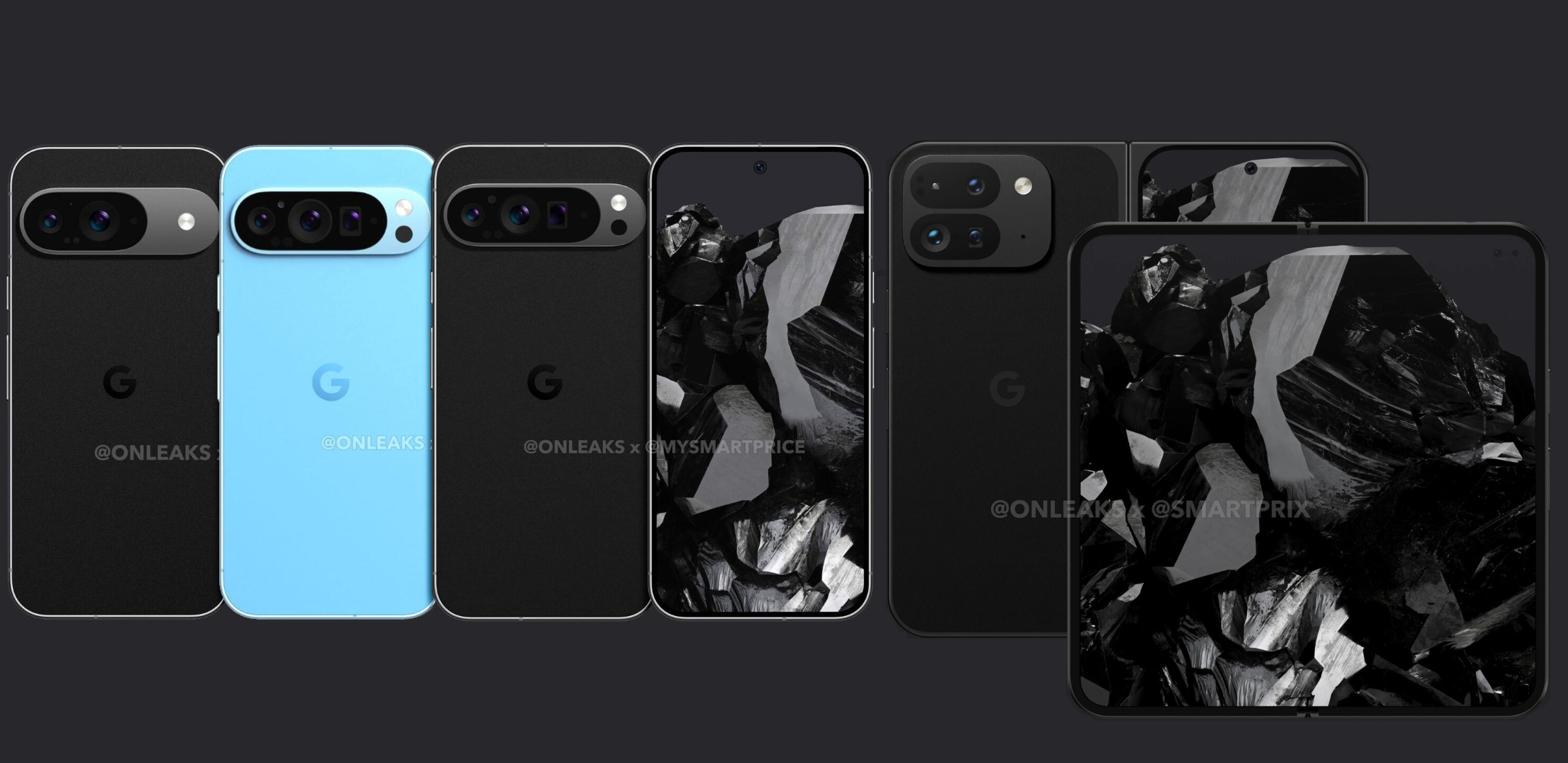

While Wojciechowska stresses that ‘Pixel 9 Pro Fold’ may not be the final name for ‘comet’, ‘it is what Google is using at the moment’ within ‘software built for Google’s 2024 devices’. The same leaker reports that these devices will feature a new modem, albeit one still produced by Samsung’s Exynos division. Reportedly, Google has settled on the Exynos Modem 5400, a 3GPP Release 17 5G modem that will run alongside the Tensor G4 chipset.
In theory, the Exynos Modem 5400 should furnish the Pixel 9 series with satellite connectivity, although Samsung does not mention this in its press release. At any rate, Wojciechowska hints that this modem will also underpin a next-generation Pixel Tablet with 5G connectivity codenamed ‘clementine’. For now, all Pixel 9 series smartphones are expected to land in autumn 2024. In the meantime, Google will release the Pixel 8a in four colours, including a striking new green option.
-
Business24 hours ago
FFAW, ASP Pleased With Resumption of Crab Fishery – VOCM
-
Media24 hours ago
Marjorie Taylor Greene won’t say what happened to her Trump Media stock
-
Media15 hours ago
Trump Media plunges amid plan to issue more shares. It's lost $7 billion in value since its peak. – CBS News
-
Media23 hours ago
Trump Media stock slides again to bring it nearly 60% below its peak as euphoria fades – National Post
-
Business23 hours ago
Tesla May Be Headed For Massive Layoffs As Woes Mount: Reports – InsideEVs
-



 Tech19 hours ago
Tech19 hours agoJava News Roundup: JobRunr 7.0, Introducing the Commonhaus Foundation, Payara Platform, Devnexus – InfoQ.com
-



 Sports18 hours ago
Sports18 hours agoRafael Nadal confirms he’s ready for Barcelona: ‘I’m going to give my all’ – ATP Tour
-



 Sports23 hours ago
Sports23 hours agoPoints and payouts: Scottie Scheffler cements FedExCup top spot with Masters win, earns $3.6M – PGA TOUR – PGA TOUR













